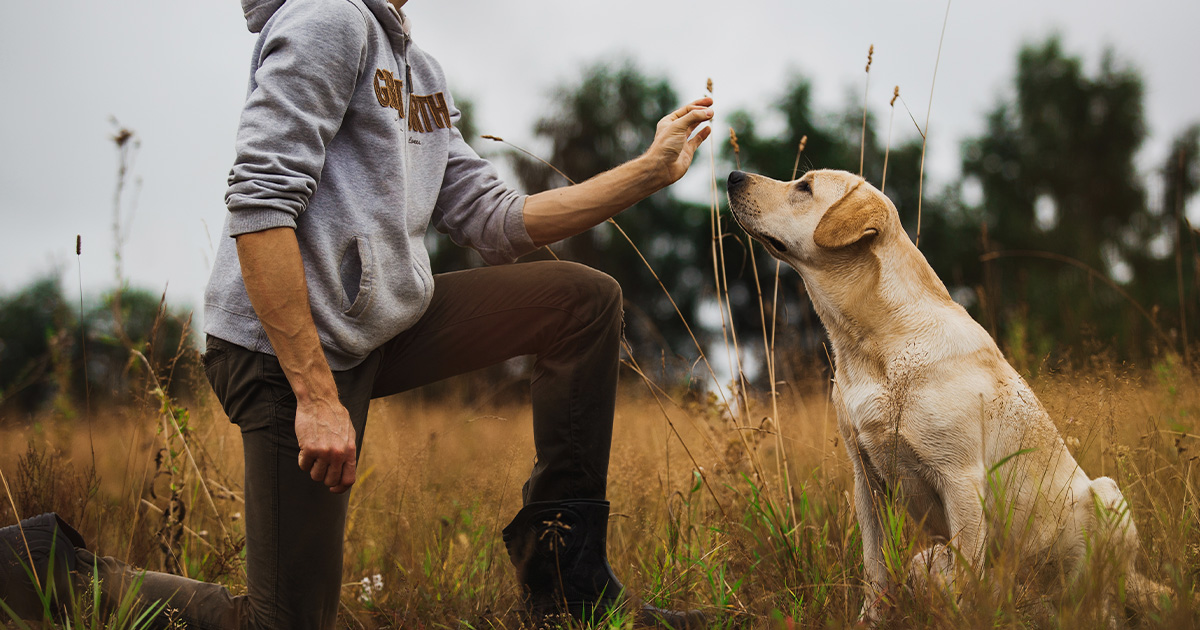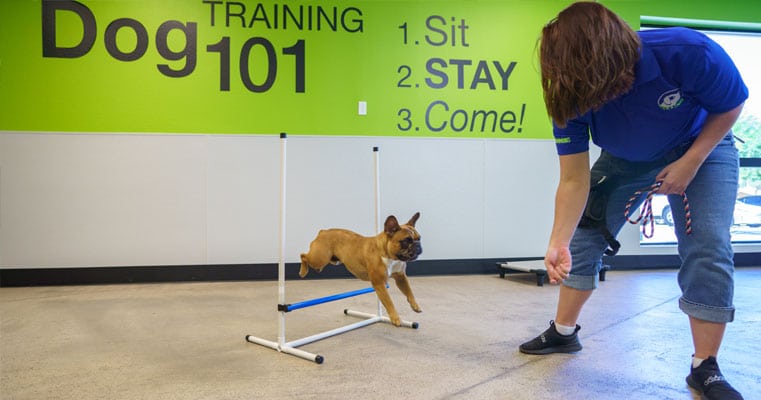Novice's Guide to Successful Canine Training in your home
Efficiently training a pet dog at home needs a nuanced understanding of canine behavior and reliable interaction techniques. Establishing clear training objectives, making use of top notch benefits, and maintaining uniformity across member of the family are important components. Integrating training into daily regimens can enhance both involvement and retention. Many amateur instructors encounter challenges that might hinder progress. To browse these complexities successfully, it's important to discover a number of crucial elements that can change your method and lead to a harmonious relationship with your pet dog. What basic concepts should every newbie grasp to make certain success?
Recognizing Pet Behavior
Recognizing dog habits is necessary for effective training and fostering an unified connection in between human beings and their canine buddies. Dogs connect mostly with body language, articulations, and face expressions, making it crucial for proprietors to analyze these signals properly. Acknowledging habits such as tail wagging, growling, or cowering can provide insights right into a dog's emotional state and intentions.

Usual behavior concerns, such as hostility, stress and anxiety, or excessive barking, often come from misunderstandings or unmet needs. Observing and attending to these problems quickly can prevent escalation and guarantee a favorable training experience. By fostering a deep understanding of pet dog behavior, owners can tailor their training approaches to suit their canine companions, eventually causing a contented and well-behaved pet dog.
Necessary Educating Tools
A fully equipped training area can dramatically improve the effectiveness of pet dog training in the house. Crucial training tools make sure that both the trainer and the canine can take part in effective sessions that cultivate knowing and bonding.

Buying a sturdy chain and a comfortable, well-fitting collar or harness is crucial for safety and control. These devices assist establish borders and ensure the canine stays safe and secure throughout training. Additionally, an assigned training area, complimentary from interruptions, help focus for both the pet and the trainer.
Training aids such as training pads, cones, or agility devices can likewise improve the experience by presenting range and challenges. Having a notebook or electronic application for tracking development can be invaluable, enabling you to note successes and locations for renovation. Utilizing these crucial tools will certainly create a positive training setting and lay the foundation for effective knowing.
Developing a Training Routine
Establishing a regular training regimen is necessary for efficient pet training at home. A well-structured routine not just aids in strengthening preferred actions yet also offers your pet with a complacency and predictability. To produce a reliable training regular, begin by determining specific training goals, such as standard commands, chain walking, or housebreaking.
Select a designated time daily for training sessions, ideally when your pet dog is sharp and receptive. Procedure should be short, about 5 to 15 minutes, to maintain emphasis and protect against tiredness. Consistency in timing and try this atmosphere will boost your pet dog's understanding experience.
Integrate training right into daily tasks to reinforce skills. Practice commands during walks or mealtime, which incorporates finding out into natural regimens. Furthermore, stay flexible and change the regular as needed, fitting your canine's power levels and mood.
Favorable Support Strategies
Positive support strategies are fundamental to efficient dog training, advertising preferred habits via benefits rather than penalty. This approach uses positive stimuli, such as deals with, appreciation, or play, to motivate pet dogs to repeat specific activities. The foundation of this method is timing; incentives need to be offered right away complying with the wanted actions to develop a clear organization.
When applying positive reinforcement, it is crucial to select benefits that are motivating for your pet. High-value treats, such as tiny pieces of poultry or cheese, can be look what i found specifically effective during training sessions. In addition, differing the rewards can preserve your pet dog's passion and interest.
Start with basic commands, like "sit" or "remain," and slowly progression to more complicated tasks. Uniformity is vital; make sure that all member of the family utilize the very same commands and benefit systems to prevent confusion.
Additionally, it is important to continue to be client and avoid stress. Pets, like humans, learn at their own pace. By cultivating a supportive training environment via favorable reinforcement, you can enhance your pet's discovering experience while reinforcing the bond in between you and your fuzzy friend, preparing for effective training outcomes.
Usual Training Challenges
While educating a pet in the house can be a gratifying experience, it frequently includes a set of usual obstacles that can evaluate both patience and uniformity. One common concern is diversion. Dogs might become conveniently sidetracked by sounds, movements, or perhaps aromas in their setting, making it challenging to keep their focus throughout training sessions.
One more obstacle is inconsistency in commands and reinforcement. If member of the family make use of various signs or incentives, it can puzzle the canine and prevent development. Developing a unified method is vital for reliable interaction.
Additionally, pets can experience stress or stress and anxiety, particularly if they do not recognize what is anticipated of them. This can bring about unfavorable actions, such as chewing or barking.
Finally, the timing of reinforcement is vital (Dog training). Delayed rewards can decrease the performance of positive support, as pet dogs may stop working to link the actions with the incentive
Conquering these difficulties calls for dedication, clear interaction, and an organized training plan. Recognizing and resolving these typical challenges will certainly lead the method for a more successful and delightful training experience in your home.
Conclusion
In conclusion, successful dog training at home necessitates an extensive understanding of canine actions and effective interaction strategies. By establishing clear training goals and using high-grade deals with together with favorable support, the training procedure ends up being more satisfying for both the dog and the trainer.
Establishing a regular training regimen is essential for reliable dog training at home.Positive support methods are fundamental to reliable dog training, promoting preferred habits via incentives rather than penalty (Dog training). By fostering a supportive training environment through favorable reinforcement, you can enhance your dog's learning experience while reinforcing the bond between you and your fuzzy companion, laying the groundwork for successful training results
In final thought, effective canine training at home demands a check my reference thorough understanding of canine actions and efficient communication techniques. By developing clear training objectives and using high-grade deals with along with favorable support, the training procedure comes to be much more gratifying for both the trainer and the pet.